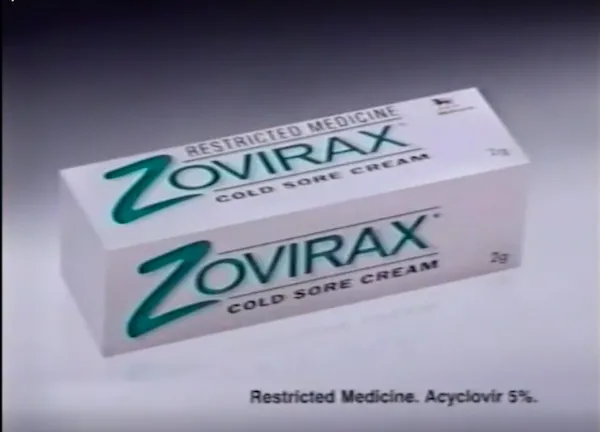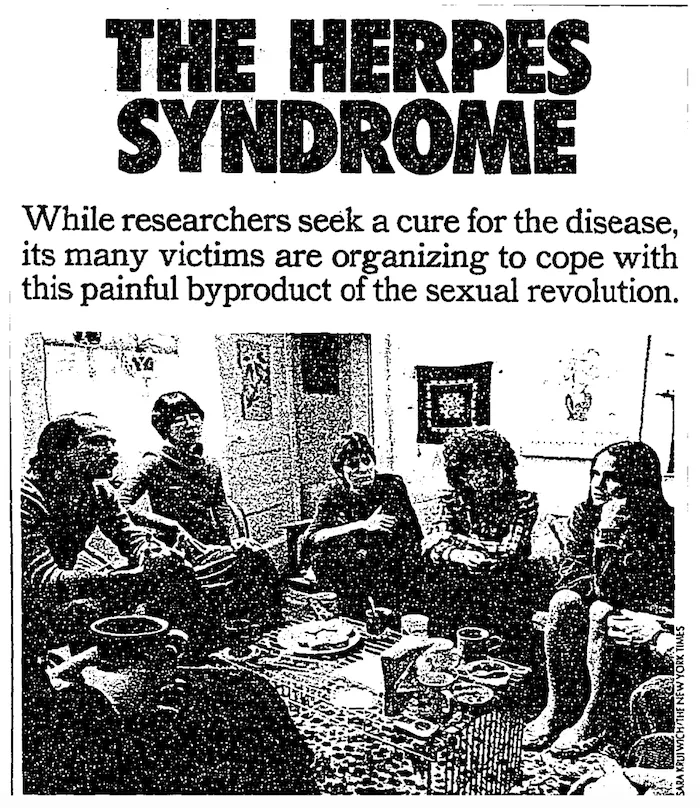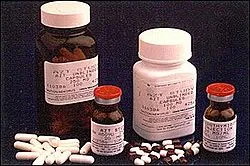If you've watched the evening news in the United States any time in the past 20 years, you've likely noticed direct-to-consumer advertising of prescription drugs--generally a montage of senior citizens walking down the beach while a voiceover lists a series of horrifying side effects. In truth, industry experts have known for decades that the most effective way to market a drug is not to sell the treatment, but to sell the disease. This tactic is known as "disease mongering,” and it's terrifyingly effective.
Over the course of disease mongering campaigns, pharmaceutical corporations have planted misinformation in newspapers, paid doctors to prescribe their medications, and funded studies with misleading or exaggerated results to manipulate the medical community. We have pharmaceutical disease mongering to thank for medicalizing or playing up male pattern baldness, osteoporosis, erectile dysfunction, and social phobia. The rebranding of the common herpes virus into a shameful STD may be the most infuriating (and profitable) example of pharmaceutical disease mongering in history.

The History of Herpes Viruses
The facts about herpes are difficult to pin down. If you Google basic questions about modes of transmission, prevalence, or whether or not it’s even a problem, you will find completely contradictory information between reputable sources like doctors and medical journals. That being said, even conservative numbers place the worldwide population of carriers in the billions, with many never experiencing symptoms or even realizing that they have it. Most carriers of HSV-1 (the cold sore virus) acquire it during childhood. Chicken pox and shingles are also caused by a strain of herpes.
Why are the herpes viruses so prevalent? Because herpes has been around for millions of years, predating our evolution as a species. The virus has been so ubiquitous throughout our entire history that anthropologists have been able to trace migration patterns by tracking herpes mutations.
When the virus was identified in the 1940s, the medical community had an explanation for what caused cold sores, but few people cared. In general, the perceived medical severity of both oral and genital cold sores prior to the late 1970s was about on par with a bad bout of acne. They certainly weren’t pleasant or attractive, but they were normal. By the late 1970s, however, doctors began diagnosing a disease that had never really been thought of as such, creating the perception that it was a new illness or that rates of infection had risen.

Finding a Disease for a Treatment
In the 1970s and 1980s, Burroughs Wellcome (now GlaxoSmithKline) developed the herpes suppressant Acyclovir (Zovirax). The original herpes medications of the 60s and 70s were intended to suppress genuinely debilitating illnesses like shingles, or to treat immunocompromised patients, like transplant recipients and newborns. Acyclovir could also be used to suppress the common cold sore and genital herpes, if people were willing to believe that they needed treatment.
In a 1983 article, the president of Burroughs Wellcome, William Sullivan, admitted that the company needed Zovirax to succeed to overcome an 8 year slump. Pedro Cuatrecasas, who was in charge of R&D at Burroughs Wellcome at the time, explained:
“During the D&D of acyclovir (Zovirax), marketing insisted that there were ‘no markets’ for this compound. Most had hardly heard of genital herpes… At initial marketing, in 1982, of the ointment form only, the informal estimates of peak sales were about $10 million a year for all forms of the drug, far below the annual sales of well over $1 billion that were ultimately achieved.” - From “Drug Discovery in Jeopardy,” in The Journal of Clinical Investigation.
So how did the demand for herpes treatments increase so dramatically that Acyclovir became a billion dollar drug?

The Disease Mongering Campaign of 1982
If you search the term “herpes” in newspaper databases, you’ll notice that mentions of the virus skyrocket in the first months of 1982, just as Zovirax hit the market, with thousands of dramatic headlines like “The Terrible Curse of Herpes,” “The Disease that Warps Minds, Lives,” “Herpes said to be an epidemic in U.S,” “Today's Scarlet Letter,” and “Herpes Now Blamed for More Illness than any other Human Viruses.”
The latter, published in the New York Times, cites as its expert Dr. Fred Rapp, who was close enough to Burroughs Wellcome that he edited their symposium journal. Many articles about herpes published in 1982 feature the same cast of experts, many of whom were closely involved in the development of Acyclovir or were employed at Burroughs Wellcome. Burroughs Wellcome even funded support groups for “victims” of the disease.
Generally, the articles tend to claim that herpes is a new incurable epidemic brought about by the sexual revolution (tell that to prehistoric man), that women with herpes often give birth to babies with mortality rates at over 50% (neonatal transmission is extremely rare, at about 0.01-0.03% depending on the study), that herpes can give you cervical cancer (it doesn't), that nobody will ever love you again (yes, this was published in legitimate newspapers), and so on. The articles also invariably include some mention of Acyclovir as a new wonder drug that provides hope for herpes “victims.”
“…a spate of panicky headlines alerted Americans to a new, alarming byproduct of the sexual revolution. Genital herpes—incurable, recurrent and highly contagious—was spreading rapidly. What the early reports did not convey, though, was the psychological damage and medical bafflement herpes would bring with it. Today, this viral infection has not only established itself as an uncontrollable epidemic; it has proved to be one of the most exasperating ailments, for patients and doctors alike… [it] produces painful, fluid-filled blisters on the genitals… [some] are in constant pain. Virtually all of them, however, must endure an emotional crisis so distinct in its assault on their sense of worth that psychologists speak of ‘herpes syndrome.’ Across the country, herpes victims find themselves suddenly beset by new vulnerabilities and moral dilemmas. They feel tainted, fearful that no one will ever want to love them—and thus torn over the question of whether to tell new friends and prospective sex partners about their affliction. Women who plan to have children face particularly frightening risks. Newborn babies can pick up the virus in the birth canal with devastating results… Acyclovir has caused a great deal of excitement among herpes victims…” - “Health,” New York Times, February 21, 1982.

Herpes and the AIDS Epidemic
Rumors about herpes spread easily, facilitated by stigmas against premarital sex, misogynistic stereotypes about "loose" women, rampant homophobia, and most importantly, the emergence of the truly devastating AIDS epidemic that ravaged the United States and killed millions, turning STDs into an object of terror.
On a related note, Burroughs Wellcome was also the manufacturer of AZT, the first life-extending HIV treatment, for the low price of $10,000 a year—the most expensive drug treatment in history at the time. An estimated 35% of AIDS patients had no way to pay for the medication that could extend their lives, because AIDS victims were disproportionately members of vulnerable and marginalized communities who could not afford health insurance that would cover it: the poor, the homeless, drug addicts, people of color, and LGBT youth. Burroughs Wellcome insisted that the price tag was necessary to recoup research and development costs and blamed regulation, though AZT had already been synthesized on an unrelated project by the NIH before Burroughs Wellcome decided to repackage it as an AIDS treatment, and they hadn’t invented it in the first place. In fact, it was probably extraordinarily inexpensive to manufacture, but we will never know for sure, because Burroughs Wellcome refused to disclose costs when asked. Now that their patent has expired, generic AZT currently costs about $5-$25 monthly in the developing world, or about $200 in the US.

The Consequences of Stigmatization
The researchers who worked for years developing Acyclovir were probably well-intentioned: they developed a medication which managed several rare and potentially deadly diseases that had gone ignored. Dr. Fred Rapp spent his life’s work searching for a link between herpes viruses and cancer, and genuinely believed that the virus was a secret menace to public health, however misguided that was.
Today, the herpes industry is worth almost $5 billion annually, with cold sore suppressants collectively exceeding sales of Aspirin and Tylenol. Herpes treatment is so lucrative that market research firms publish reports forecasting industry growth. If you’re looking for investment opportunities, economists predict a 36% growth in sales by 2023.
However, as a result of rebranding herpes as a life ruining STD, people contemplated or even committed suicide believing that their lives were over, left loving marriages and relationships because they thought their partners had cheated, developed depression and anxiety disorders, had medically unnecessary C-sections, and chose not to have the families they wanted out of fear of killing their newborn babies. In truth, the most severe consequence of a herpes diagnosis is emotional distress. The CDC now recommends against testing patients for herpes because “the risk of shaming and stigmatizing people outweighs the potential benefits,” even if it might prevent transmission, and that’s coming from an organization whose entire purpose is stopping the spread of diseases. But hey, just ask the beauty industry--making people feel terrible about themselves is great for business.